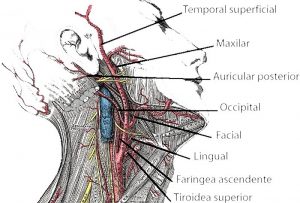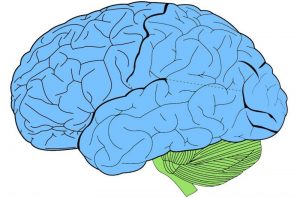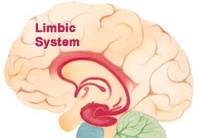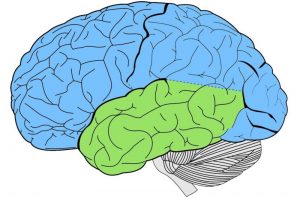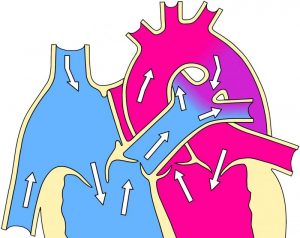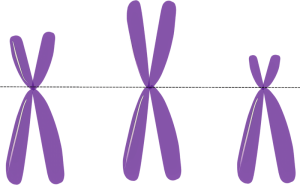Chlorphenamine
Chlorphenamine belongs to a group of medications called "sedative antihistamines" that have the ability to help reduce allergic symptoms by preventing the effects of a substance called histamine. Histamine is produced by the body as a response to foreign substances to which the body produces a series of allergic reactions. It also works directly on the brain to help it feel more relaxed.
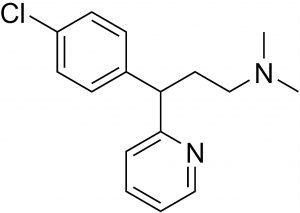
- Formula: C16H19ClN2
- Molar mass: 274.78 g/mol
What is chlorphenamine?
Chlorphenamine is a drug that belongs to the group of sedative antihistamines that has the function of blocking the effects of histamine to relieve the symptoms of allergic reactions that affect the body.
This drug was introduced into medicine in 1951 and can be administered orally or by intravenous, intramuscular or subcutaneous injection in the form of chlorphenamine maleate.
What is chlorphenamine for?
Chlorphenamine or chlorpheniramine as it is also known, is a medicine recommended in the treatment of symptoms arising from various allergic reactions, such as, for example:
- Allergic rhinitis: Rhinitis is one of the allergic diseases that affect children, young people and adults, and there are different types, from seasonal rhinitis, produced by pollens, such as hay fever, to perennial type rhinitis, which give symptoms in all seasons throughout the year.
- Allergic conjunctivitis: a virus that affects the eyes and produces allergic reactions ranging from mild to severe. It relieves itching, redness and inflammation of the eyes.
- Skin symptoms of mild uncomplicated allergy can be treated with chlorphenamine, allergies such as hives, and other allergic skin rashes. It can also be used in some mild cases of angioedema.
- Food allergy: Many patients who ingest chlorphenamine, do so after eating a certain type of food that triggers an allergic reaction in the body.
- Allergic reactions: which are produced by medicines, vaccines or other biological derivatives such as plasma or blood, which when introduced into the human body generate a series of allergic reactions.
It is useful to treat any type of skin disease that may cause itching, such as atopic eczema or contact, can be to soaps, substances, etc..
In case of severe life-threatening allergies such as anaphylactic reactions. In these cases, Chlorphenamine is indicated after the acute phase of the reaction has passed, after the patient has been stabilized by appropriate emergency measures.
It is indicated in cases of insect bites.
Presentation and dosage of chlorphenamine
Chlorphenamine is a medicine that can be found in the following presentations:
- Tablets or pills of extended or modified release: These tablets have a presentation of 8 or 12 mg of active ingredient along with other substances such as calcium sulfate, carnauba wax, lactose mono-hydrate, oleic acid, povidone, corn starch, sucrose, talc, tribasic calcium phosphate, etc..
- Oral solution in drops: The solution comes in a presentation of 1 or 2 mg/ml.
- Oral suspension in syrup: This type of suspension contains 2, 2.5 or 4 mg of active ingredient per 5 ml of liquid in the container.
- Injectable solution: This can be applied intramuscularly or intravenously and comes in the form of ampoules containing 10 mg of product for each ml of purified water used in the injections.
Chlorphenamine is a product that must be kept in its original container, perfectly closed and must be kept out of the reach of children.
Contraindications
- If the patient is taking medication for anxiety, depression or convulsions, muscle relaxants, narcotic analgesics, sedatives, sleeping pills and tranquilizers.
- If the patient has had asthma, emphysema, chronic bronchitis, or other types of lung disease.
- If there is glaucoma or increased eye pressure because it can cause gradual loss of vision.
- If diabetic or have difficulty urinating, heart disease, high blood pressure, seizures, or an overactive thyroid gland.
- If the patient is pregnant or breastfeeding.
- If the person need to drive vehicles or operate machinery.
Side effects
Like all drugs on the market, chlorphenamine can cause a number of side effects in people who take it, including the following:
- Drowsiness
- Dry mouth, nose, and throat
- Nausea and vomiting
- Loss of appetite
- Constipation
- Headache
- Sensation of congestion in the chest
Some of these side effects can be complicated and even serious. If any of the symptoms listed below occur, patients should contact their doctor immediately:
- Vision problems
- Urinary difficulty
Trade name
It can be found under the trade name of Chloro-Trento, Docsi, Derimeton and by its generic name as Chlorphenamine, Chlorpheniramine, Chlorphenamine Maleate.
Compound chlorphenamine
It is an anti-flu medicine that treats the general and local symptoms of the common cold in a palliative way. It is composed of chlorphenamine, a competitive histamine antagonist at H1 receptor level; phenylephrine, which produces vasoconstriction by decreasing congestion associated with mucosal inflammation that obstructs the nasal passages; caffeine, a central nervous system stimulant that produces well-being and relaxation of smooth muscles; and acetaminophen, which functions as an analgesic that temporarily relieves body pain and fever. Its components are absorbed through the gastrointestinal mucosa.
How to cite this article?
Briceño V., Gabriela. (2019). Chlorphenamine. Recovered on 3 May, 2025, de Euston96: https://www.euston96.com/en/chlorphenamine/



